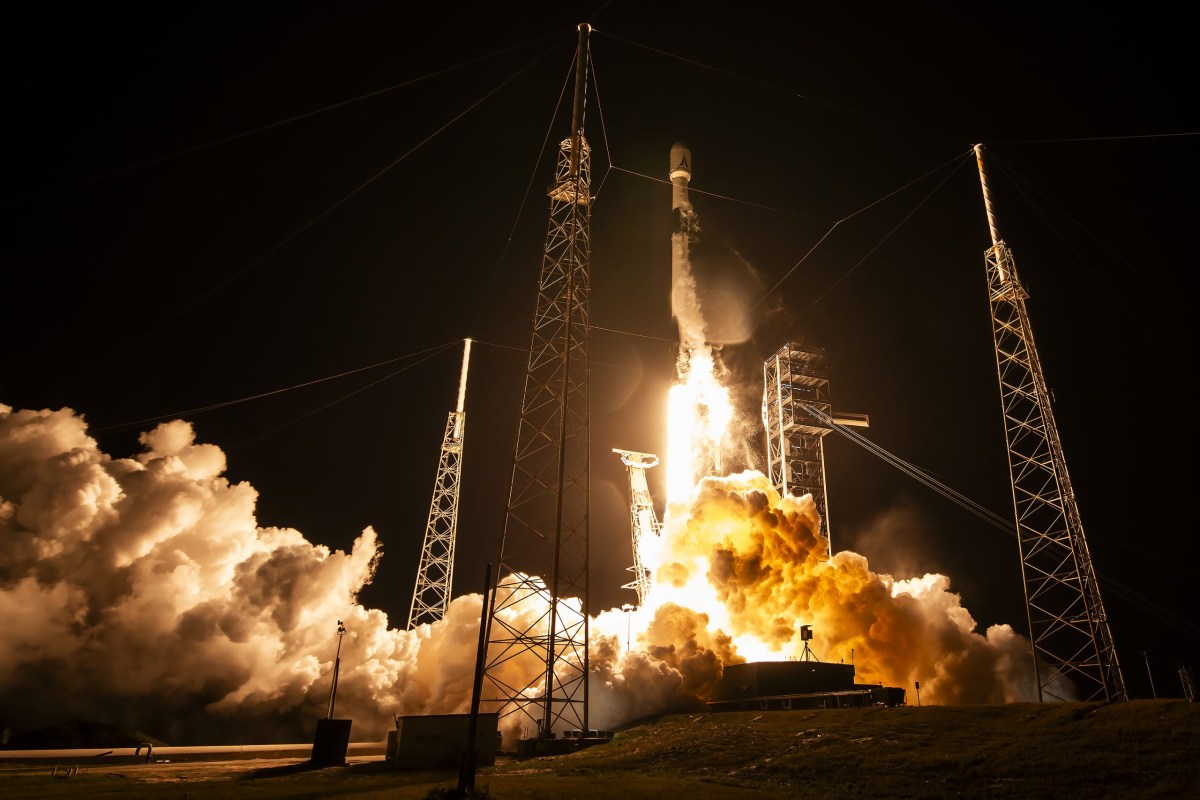TAMPA, Fla. — SpaceX successfully launched four Astranis-built broadband spacecraft toward geostationary orbit Dec. 29, marking the first time a single commercial manufacturer has flown four of its own satellites on one mission to GEO.
A Falcon 9 rocket carrying the satellites lifted off 12:00 a.m. Eastern from Cape Canaveral Space Force Station, Florida, placing them in super-synchronous geostationary transfer orbit a little over half an hour later.
Astranis spokesperson Christian Keil confirmed signal acquisition about three hours later, saying the satellites should now take a few months to get into position and pass health checks ahead of entering commercial service.
The company’s previous satellite, Arcturus — the first based on its small, roughly 400-kilogram MicroGEO platform that can be reprogrammed in orbit — suffered a failure of two onboard solar array drive assemblies after successfully launching on a SpaceX Falcon Heavy in April 2023.
In addition to solar array improvements, the Block 2 batch of four satellites include:
A new Astranis-designed gimbal the manufacturer expects will extend operational life from seven to at least eight years.
A deployable main reflector designed to boost the Ka-band throughput per satellite from 10 gigabits per second to 12 Gbps.The Arcturus malfunction prevented the satellite from keeping solar arrays pointed at the sun for consistent power, derailing initial plans to beam broadband to Alaska for local telco Pacific Dataport.
San Francisco-based Astranis instead moved the satellite over Asia earlier this year, supporting Israeli operator Spacecom claim to an orbital slot it had reserved in the region under international regulations.
The Block 2 batch of four Astranis satellites awaiting launch. Credit: AstranisTwo Block 2 satellites, NuView Alpha and NuView Bravo, are en route to geostationary orbit over the Americas for inflight connectivity provider Anuvu.
Another satellite called Agila was sold to Orbits Corp, part of Philippine internet service provider HTechCorp, and Astranis said it would be the first communications satellite ever dedicated to the Philippines.
Astranis describes the fourth satellite, UtilitySat, as a multi-mission spacecraft set to serve several customers throughout its operational life.
UtilitySat was initially flagged to provide bridge capacity over Alaska; however, Keil said it would first provide communications over Mexico for Apco Networks, a Mexican telco that has ordered two of the five Block 3 Astranis satellites aims to launch together next year on an undisclosed rocket.
“This UtilitySat mission will be an accelerator to that mission — giving them capacity to get started and get some market traction before the two dedicated sats launch,” Keil said.
Astranis has not announced any more UtilitySat customers beyond Apco.
The company operates its satellites and sells the capacity under long-term leases. At the size of a dishwasher, they are much smaller than typical school bus-sized GEO spacecraft and are scaled for smaller regional coverage.
In a statement, Astranis CEO John Gedmark said: “With this launch we will prove that Astranis can ship and operate multiple satellites at once.
“We are well on our way to the increased manufacturing cadence we need to hit to meet all of customer demand, including both commercial and government.”
Block 3 also includes a replacement for Pacific Dataport, another satellite for Orbits Corp, and one for Thai fleet operator Thaicom.
In 2026, Astranis plans to start deploying next-generation Omega broadband spacecraft that would be slightly bigger than previous generations to deliver five times more throughput.
Industry evolution
According to Keil, the Dec. 29 SpaceX mission also saw Astranis become the fourth company to deploy four or more satellites to GEO in a calendar year, joining established fleet operators SES, Intelsat, and Eutelsat.
Astranis has also now launched more satellites to GEO over the last two years than any other operator, amid a declining geostationary market that has been losing ground to low Earth orbit constellations.
Switzerland’s Swissto12 is also looking to carve out a role in the small GEO market, aiming to deploy its first satellites in 2026 after winning four orders in total from Viasat and Intelsat.
